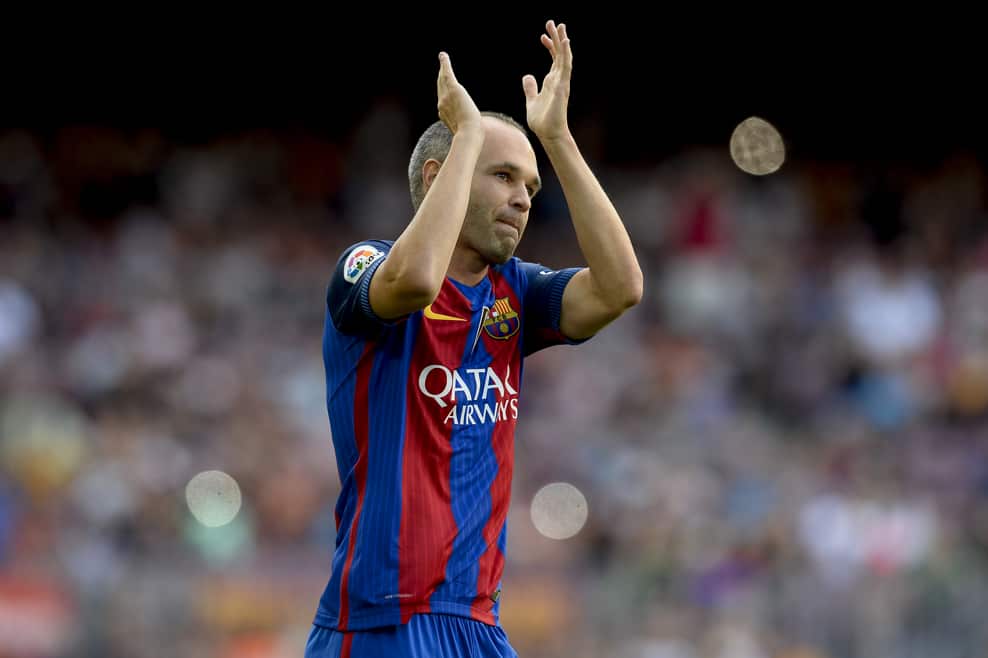Introduction
When you think of modern football, certain names immediately come to mind, and Andrés Iniesta is certainly one of them. Revered as one of the finest midfielders in the history of the game, Iniesta has dazzled fans with his sublime skills, incredible vision, and ability to dictate the tempo of a match. From his early days at Barcelona to his legendary goal in the 2010 World Cup final, Iniesta’s career is one that will be remembered for generations to come.
Who is Andrés Iniesta?
Born on May 11, 1984, in Fuentealbilla, Spain, Andrés Iniesta grew up with a passion for football. His talent was apparent from a young age, and by the time he was 12, he had moved to Barcelona to join the prestigious La Masia academy. His journey from a small village in Albacete to becoming a global football icon is a testament to his dedication and love for the game.
Iniesta’s Journey Through La Masia
Iniesta’s story cannot be told without mentioning La Masia, Barcelona’s world-renowned youth academy. It was here that he honed his skills, learned the importance of possession football, and was shaped into the player who would become pivotal in one of the most dominant teams of all time. La Masia was not just about football techniques, but also about instilling values like humility, teamwork, and respect—qualities that Iniesta embodies both on and off the pitch.
Breaking into Barcelona’s First Team
In 2002, a young Iniesta made his first-team debut for FC Barcelona. Although he started out slowly, often being used as a substitute, it didn’t take long for the football world to take notice of his unique abilities. By the mid-2000s, Iniesta had become a regular in the starting lineup, showing a rare blend of technical brilliance and tactical intelligence. His quick feet, calm demeanor, and ability to keep possession in tight spaces made him stand out even in a team full of superstars.
Playing Style and Key Attributes
What made Iniesta truly special was his style of play. He wasn’t just a midfielder; he was an artist with the ball. Iniesta’s game was defined by his incredible vision, pinpoint passing, and a first touch that seemed almost otherworldly. His ability to glide past opponents effortlessly, combined with his spatial awareness, allowed him to control games in a way few others could.
One of Iniesta’s standout qualities was his decision-making. He always seemed to pick the right pass, whether it was a simple one-two or a defense-splitting through ball. His dribbling was equally mesmerizing, often leaving defenders chasing shadows as he danced through the midfield.
Iniesta’s Role in the Pep Guardiola Era
The arrival of Pep Guardiola as Barcelona’s manager in 2008 marked the beginning of an era of dominance for the club, and Iniesta was at the heart of it. Under Guardiola, Barcelona perfected the “tiki-taka” style of play, which relied on quick, short passes and constant movement. Iniesta, alongside Xavi and Sergio Busquets, formed one of the most formidable midfield trios in football history.
Iniesta’s intelligence, versatility, and technical mastery made him essential to Guardiola’s system. Whether playing as a central midfielder or on the wing, he always found ways to make the game flow seamlessly, acting as the link between defense and attack.
The Famous Goal: Iniesta’s 2010 World Cup Triumph
Perhaps the most iconic moment in Iniesta’s illustrious career came on July 11, 2010, during the FIFA World Cup final in South Africa. In the 116th minute of a tense match between Spain and the Netherlands, Iniesta scored the winning goal, securing Spain’s first-ever World Cup. The image of Iniesta celebrating, dedicating the goal to his late friend Dani Jarque, is etched in the memory of football fans worldwide.
This goal solidified Iniesta’s place as a national hero in Spain and was the pinnacle of a golden era for Spanish football, where the national team won three consecutive major tournaments: Euro 2008, World Cup 2010, and Euro 2012.
Iniesta’s Relationship with Lionel Messi
One of the most fascinating partnerships in modern football was the one between Iniesta and Lionel Messi. Together, they created magic on the pitch for over a decade. Iniesta’s ability to find Messi with perfectly timed passes, and Messi’s knack for finishing them off, led to some of the most memorable goals in Barcelona’s history.
While Messi often stole the headlines with his goals, Iniesta was the quiet conductor orchestrating the moves. Their understanding of each other’s movements, combined with their football IQs, made Barcelona almost unstoppable during their peak years.
Iniesta’s Impact on the Spain National Team
While Iniesta’s success with Barcelona is well-documented, his impact on the Spain national team was just as significant. Along with teammates like Xavi, David Villa, and Iker Casillas, Iniesta was instrumental in Spain’s dominance from 2008 to 2012, when they won two European Championships and the World Cup.
His calm presence in midfield, combined with his ability to control the tempo of the game, allowed Spain to impose their tiki-taka style on opponents. Iniesta’s performances in the 2010 World Cup, in particular, earned him widespread praise and cemented his legacy as one of the greatest ever.
Famous Matches and Iconic Moments
Over the years, Iniesta has delivered countless unforgettable performances. One of the standout moments was the 2009 UEFA Champions League final against Manchester United, where Barcelona won 2-0. Iniesta’s presence in midfield, along with Xavi, was key to Barcelona’s dominance in that match, and it marked the beginning of Barcelona’s reign as the best team in Europe.
Another iconic moment came in the 2009 semi-final against Chelsea, where Iniesta scored a last-minute goal to send Barcelona to the final. That goal remains one of the most dramatic in Champions League history.
Trophies and Achievements
Iniesta’s trophy cabinet is overflowing with silverware. During his time at Barcelona, he won nine La Liga titles, four Champions League trophies, and numerous other domestic and international honors. With the Spain national team, Iniesta helped secure two European Championships and a World Cup, making him one of the most decorated players in football history.
Iniesta’s Move to Japan
In 2018, after an emotional farewell at Barcelona, Iniesta made the surprising decision to join Japanese club Vissel Kobe. While his time in Japan may not have been as high-profile as his Barcelona years, Iniesta continued to show his class on the pitch, helping to raise the profile of the J-League and contributing to Vissel Kobe’s Emperor’s Cup victory in 2019.
Life Beyond Football
Off the pitch, Iniesta has ventured into various business endeavors, including launching his own wine label. He’s also deeply involved in charity work, using his platform to support various causes. Family plays a central role in his life, and he is known for being a devoted husband and father.
Iniesta’s Legacy in Modern Football
Andrés Iniesta’s legacy goes beyond the trophies and accolades. He has inspired a generation of footballers with his elegance, humility, and intelligence on the field. Players like Pedri and Gavi, rising stars in Barcelona today, often cite Iniesta as a key influence in their development.
Conclusion
Andrés Iniesta will always be remembered as one of football’s greats. His ability to control a game, his humility in the face of immense success, and his unforgettable moments on the biggest stages have earned him a place in the pantheon of football legends.


